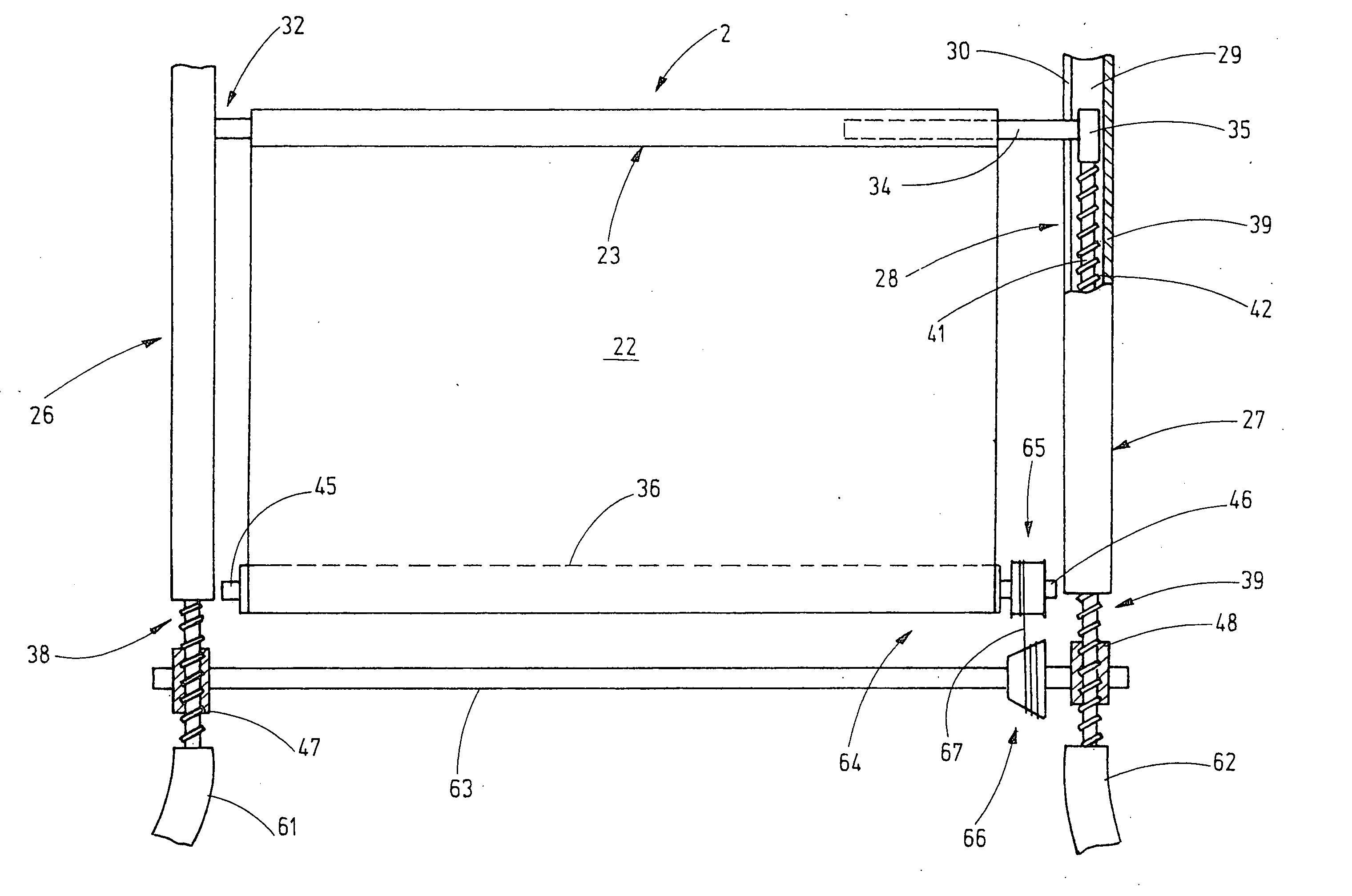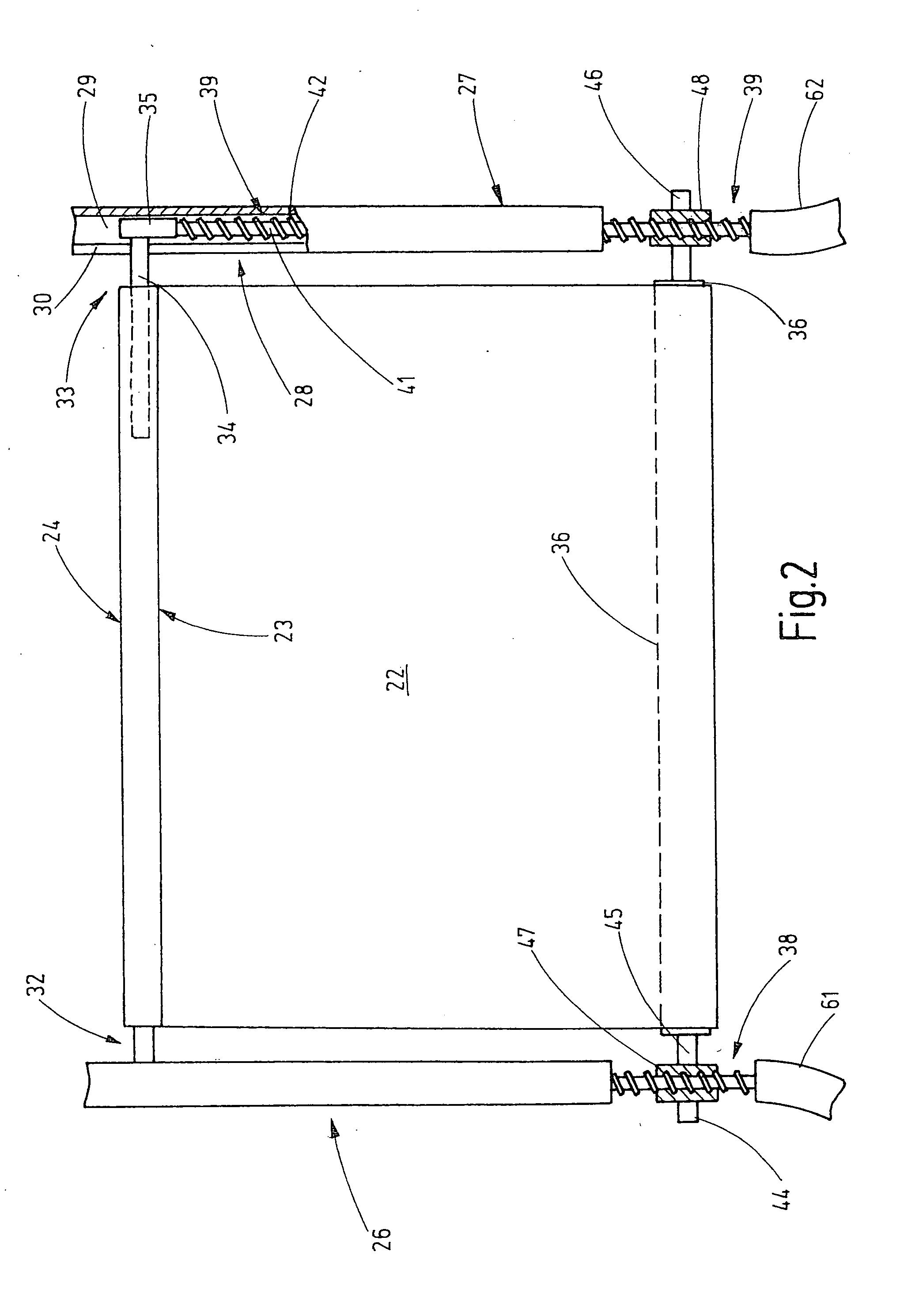Manually activated roll-up window shade
a technology of window shades and activation forces, applied in the field of window shades, can solve the problems of increased costs, difficult mounting of tension cords, and increased activation force that must be applied to shade elements, and achieve the effect of low production cos
- Summary
- Abstract
- Description
- Claims
- Application Information
AI Technical Summary
Benefits of technology
Problems solved by technology
Method used
Image
Examples
Embodiment Construction
[0026] Referring to FIG. 1 of the drawings, a passenger car, in particular a station wagon 1, is shown. Two A-pillars 3 and 4 project from the front edge of the roof of the car 1. A windshield 5 is arranged between the two A-pillars 3 and 4. The windshield 5 transitions into a hood 6 at its bottom edge. Rearwards of the two A-pillars 3 are B-pillars 7 and 8, C-pillars 9 and 10, and also D-pillars 11 and 12. Front side windows 13, 14, rear side windows 15, 16, and side windows for the trunk space 17, 18 are provided between the pillars 3-12. A rear window 19 which is arranged between the two D-pillars 11, 12 is provided at the end of the car. A roof opening 20 is provided in the front area of the roof 2. A sunroof 21 that borders the front windshield 5 is arranged in the roof opening 20. The sunroof 21 can be a sliding roof or a lifting roof and can incorporate a glass roof that connects both functions to each other.
[0027] A partially extended shade element 22 is arranged underneath...
PUM
 Login to View More
Login to View More Abstract
Description
Claims
Application Information
 Login to View More
Login to View More - R&D
- Intellectual Property
- Life Sciences
- Materials
- Tech Scout
- Unparalleled Data Quality
- Higher Quality Content
- 60% Fewer Hallucinations
Browse by: Latest US Patents, China's latest patents, Technical Efficacy Thesaurus, Application Domain, Technology Topic, Popular Technical Reports.
© 2025 PatSnap. All rights reserved.Legal|Privacy policy|Modern Slavery Act Transparency Statement|Sitemap|About US| Contact US: help@patsnap.com



